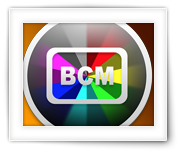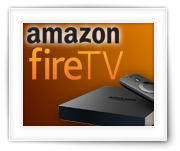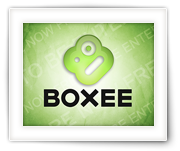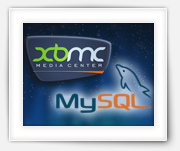
Wake On Lan, the Ethernet standard for waking up (switching them ON) network enabled devices remotely, has (again) gained popularity, especially under NAS/Server users, who use their server or NAS only a few hours a day. Wether it’s to save on your Power bill, reduce your Carbon-Footprint, or to spare your equipment, Wake On Lan is here to stay …
Now come these question though,… how do I enable Wake On Lan on my network enabled device, and how do I send a “wake up” call to my device?
In this article, I’ll try to cover as much as I can – since it can be a pretty hairy process to setup Wake On Lan. It very strongly depends on the hardware and software capabilities of your device. Even though I cannot every device on the planet, I sure will try to help you get started with Wake On Lan.
Ad Blocking Detected Please consider disabling your ad blocker for our website.
We rely on these ads to be able to run our website.
You can of course support us in other ways (see Support Us on the left).
After many iterations of Boblight Config Maker, I’ve decided to finally release v2 … keep in mind that I have the feeling it’s not quite finished yet, so it’s released as a beta, by request of many v1 users.
V2 has been rebuild complete from scratch, and (in my opinion) is not been quite perfect yet, but some will see benefit in this version as it adds a lot of new features.
Since building and maintaining this application is simply taking way too much time, this will, unfortunately, most likely be the last version as well. As with many free or open source projects, this project is taking just too much time, and unfortunately, I do have to make a living as well.
Note that for now the source will not be made public.
UPDATE: For Windows and MacOS X I have fixed several bugs, a new version (beta 3) is available.
I have written a pretty extensive article before, on “How to install Kodi on Amazon Fire TV“. It’s still an article worth reading, but a better “trick” has become available.
In the previous article, we used an application called IkonoTV as a “front” for Kodi/XBMC. This method works well, but has it’s limitations. The new method is easier to install, doesn’t need an application like IkonoTV and … the home button on the remote brings you to a screen that just works easier.
Another important feature is that this new method is supposed to work with the newer Amazon Fire TV models – unfortunately, I do not own the newer model, so I could not test and confirm that.
If you’re a Mac user, and you’re enjoying the newer MacOS X versions, then you might have noticed that Apple’s own implementation of SMB simply sucks … it just doesn’t work and for a company like Apple to just leave it this way is beyond me.
SMB is a network protocol, commonly know as “Microsoft Windows Network” or Samba, which allows sharing of files and devices over a network. Most of us use this on our Windows computers and theoretically (it seems) MacOS X should support this as well.
For me it’s to share files with family, friends, or to share media files with my XBMC/Kodi setup.
In this article, I’ll show you how to quickly get started with a working Samba implementation, instead of using Apple’s broken implementation – for this we will make use of SMBUp.
Ad Blocking Detected Please consider disabling your ad blocker for our website.
We rely on these ads to be able to run our website.
You can of course support us in other ways (see Support Us on the left).
I’ve always loved Kodi, formerly known as XBMC. I’ve installed it on regular PC’s and Mac’s, tiny PC’s, AppleTV’s (1st and 2nd generation), Boxee Box, etc. With the arrival of Amazon’s Fire TV, it was just a matter of time when I’d buy one.
I did look at numerous Android based devices before, just for the purpose of running Kodi (XBMC), but so far all the horror stories have kept me from doing so. Amazon’s Fire TV however has been reviewed and always seemed to score high when it comes to performance.u
However, … one downside of Amazon’s Android based devices is that Amazon feels the need to force their rules, their app-store and their interface on you and will not allow you to tinker with non-Amazon approved apps – like Kodi (XBMC).
So in this article I’ll show you how easy it is to install Kodi on Amazon’s Fire TV, and some additional Tips & Tricks.
It’s quick, it’s easy and the end result is awesome.
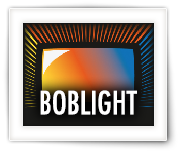
Back in the day, when the first LED TV’s appeared, Philips came with a great feature: Ambient TV lighting.
Ambient TV lighting consisted out of lights that would project to the wall behind your TV, one or more colors matching the content on your TV. So if the majority of the screen would be red, then the light emitted would be red, if the majority of the screen is green, then green light would be emitted, etc.
Over the years this has been refined to multiple colors, matching small parts of the screen. Unfortunately though, this wonderful feature is not something you can simply add to your TV. You will have to buy a Philips TV with this feature, …
Until now though, and only for XBMC (Kobi) users. Some smart guy(s) created Boblight, which is opensource and can run (for example) on your XBMC computer. The computer analyzes the video content and “converts” it to signals for LED strands, so you can attach these strands behind your TV and have a DYI Ambient TV lighting effect.
Note : This will only work for content played through your XBMC Media player (I used OpenElec)! So your regular TV shows, your XBox or PlayStation, none of these will have an influence on the “Ambient TV lighting” we will be discussing in this article.
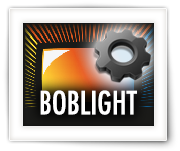
When I started building my own “AmbiLight” project, based on OpenElec (XBMC) and Boblight, the first problem I ran into is finding a tool to create a Boblight config files for use under MacOS X. Naturally, there are quite a few great tools out there that do a good job, but it’s either a script, web-based or limited to Windows users (Boblight Config Tool), and again … not for MacOS X …
Creating a config file for Boblight can be quite tedious when you have a large amount of LEDs (I had 290 LEDs), when you mix up the orientation of your LEDs (pretty common issue), or when you do not have your LEDs spread out evenly.
So here is my tool, for Windows, MacOS X and Linux, written in Lazarus Pascal – enjoy!
UPDATE: Another minor bug fixed, added test video and Boblight Config Maker can now also be found at Alternativeto.net.
Ad Blocking Detected Please consider disabling your ad blocker for our website.
We rely on these ads to be able to run our website.
You can of course support us in other ways (see Support Us on the left).
Boxee Box, a Linux box from D-Link that runs a fork of XBMC called Boxee, is dead … maybe we will see some of it return in a re-incarnation with Samsung, but I wouldn’t hold my breath … I’m sure others agree with me that Boxee went the wrong direction and I’m sure quite a few of us Boxee owners have returned to XBMC, or a XBMC variation like OpenElec.
So what are we doing with the old Boxee Box? Trying to sell it, toss it in the garbage, or … run XBMC on Boxee Box as if it’s a regular HTPC …? I gave the later a try and to my surprise it works pretty well …
One of the really nice features of XBMC is that it has the means to provide additional information on TV-Series, Movies and/or Music.
XBMC does not only work with the background info or synopsis of a movie or TV Series/Episode, it also remembers which ones you have seen, and even where in a movie you stopped – so that at a later time you can resume where you left of.
There is one little bummer to this though … the XBMC in my living-room is not sharing this the XBMC in my bedroom – and this is where MySQL comes in play.
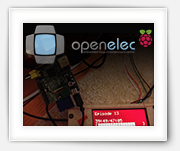
You might be familiar with XBMC, one of the best Media Center like systems/applications out there. You also might know about the $35 computer called Raspberry Pi, and that some folks managed to got XBMC to run on this little guy; RaspBMC and my favorite: OpenELEC.
Well, in this article I’ll show you how I got an LCD display (Hitachi HD44780 based) combined with LCD2USB for use with the Raspberry Pi running OpenELEC XBMC.
RaspBMC user might find this article useful as well.
If you want to use a HD44780 based display without LCD2USB then you might want to read this post that uses the GPIO port directly. The lcdproc manual pages show more details on how to configure lcdproc to use the HD44780.
Note: These instructions should be very similar for other OpenELEC systems (Generic, ATV, Fusion, ION, etc).
Ad Blocking Detected Please consider disabling your ad blocker for our website.
We rely on these ads to be able to run our website.
You can of course support us in other ways (see Support Us on the left).


